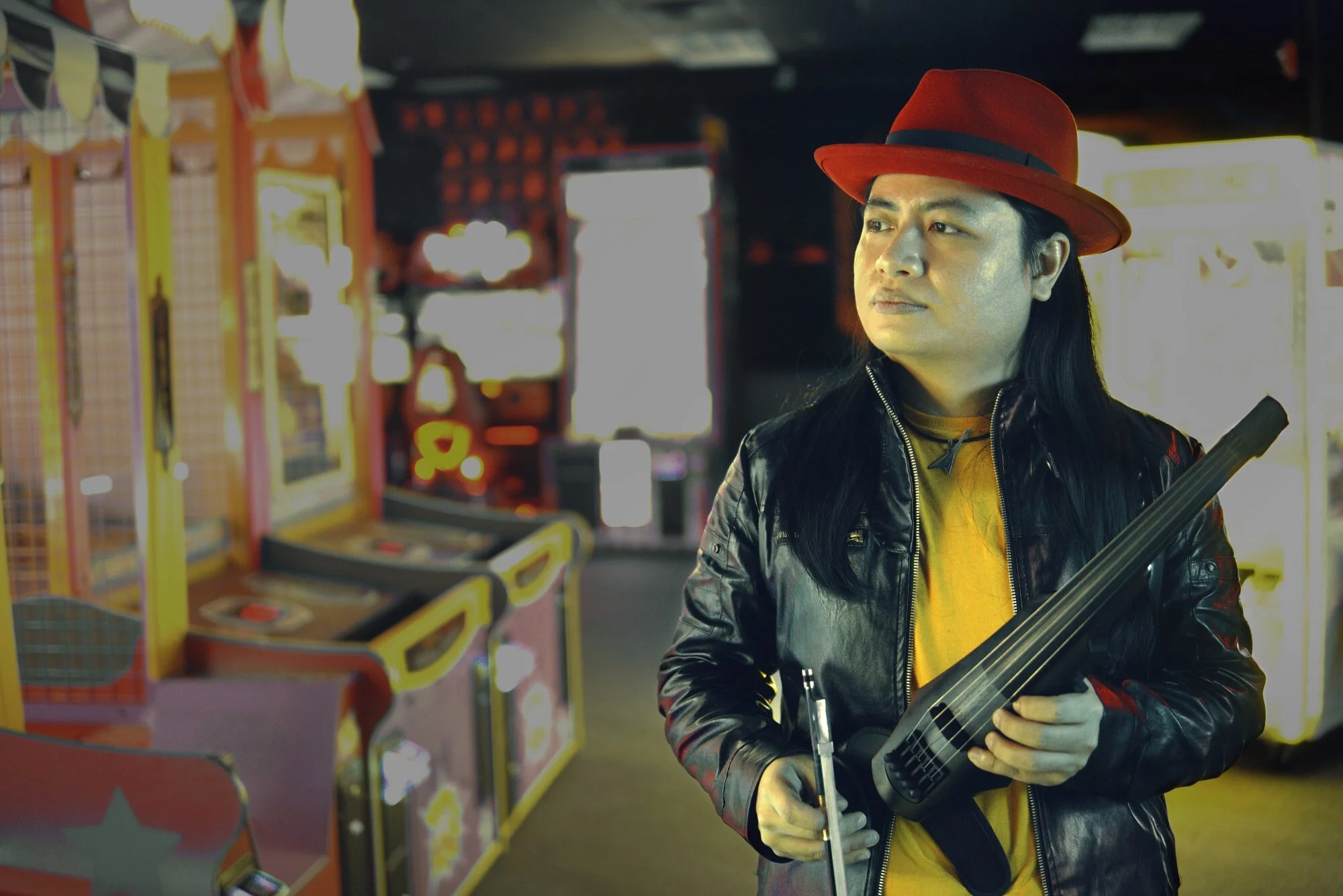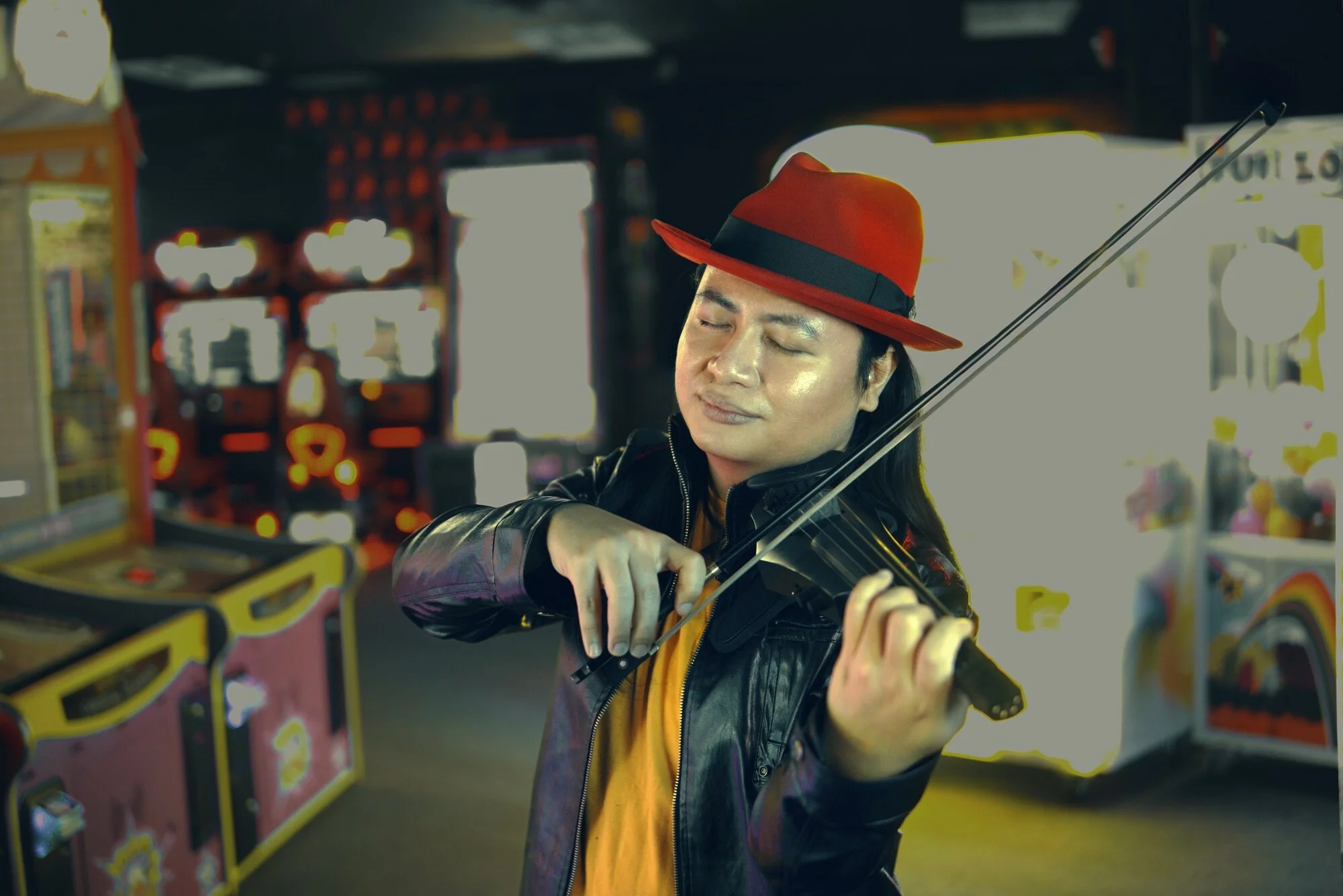String Player Gamer Interview: Hopes and Strings
Almost a year after Deltarune set the internet ablaze, fans are still finding ways to show their appreciation for the world, characters, and music that Toby Fox has created. String Player Gamer recently showed his appreciation in the form of an album, Field of Hopes and Strings. The album features a stunning variety of music over the course of fourteen tracks, and it’s one of the best VGM albums to release this year. In many ways, Field of Hopes and Strings is the spiritual successor to String Player Gamer’s Undertale album series Strings of Determination.
What is the legacy of Strings of Determination in your mind?
If my YouTube channel legitimized me as an online content creator, then I believe the Strings of Determination album series legitimized me as a VGM recording artist. The sheer volume of the massive 4-album project definitely gave me a significant chunk of that Spotify pie (Spoti-pie?), and I was able to use that momentum to take my cover production to the next level. But more importantly, Strings of Determination became some sort of “on-the-job-training” for me in terms of music production. I have learned huge lessons during the course of that project, such as the how-to’s and what-not-to-do’s of mixing and mastering. If album production was a role-playing game, I gained 10 levels worth of experience with that project alone.
How does the music of Deltarune compare to the original Undertale?
Undertale’s OST shines with its instantly recognizable melodies. No one can deny how tracks like “Megalovania” or “Bonetrousle” have penetrated the psyche of your average VGM fan, and have become iconic tunes in and of themselves. You can sing a bar from these two tracks, and they can immediately be identified by even casual Undertale fans. Even though Toby Fox displays that melodic brilliance once again with tracks like “Lancer” and “Rude Buster”, Deltarune’s OST is somewhat more atmospheric. They are still definitely well-arranged masterpieces.
The namesake of my album, for example, “Field of Hopes and Dreams” evokes an atmosphere of epic exploration and positive feelings, and yet it’s not as singable as “Spear of Justice” or “Spider Dance”. Another great track is “Scarlet Forest” which immediately gives a sense of mystery and suspense, but again, its intertwining melodic counterpoints means it probably wouldn’t be the first choice in a “Name that Tune” style game like “Dummy!” would be, and that’s not a bad thing. It was a stylistic choice that Toby Fox made, and it works very well for Deltarune.
Describe the arrangement process for Field of Hopes and Strings. Were there any unique challenges for this album?
Strings of Determination was pretty much a one-man production with mixing and mastering all done by myself, but I still considered myself a mid-tier mixing engineer with a lot to learn. So with Field, armed with healthy financial returns from my previous albums, I decided to up the ante by hiring a professional sound mixing engineer with formal training; enter AHMusic. AHMusic or Alejandro, gave the album that much-needed polish that was I personally believed was missing from Determination.
How did you decide which collaborators to invite to the album?
The collaborators were chosen on the fly and mostly on a whim as I was arranging each track. Take “Rude Buster” for example—once I decided to arrange it in a funk-metal style, I knew that I would be needing a slap bass there somewhere. Not being an expert bassist myself, I had two paths: 1) I could watch a slap bass tutorial (which I did) and rush an attempt to record slap bass myself (I failed miserably by the way) or 2) I could just ask someone I know personally, who’s already been playing slap bass for a while. Enter Legendav. I sent him a message if he was interested to slap some bass, he said yes immediately. Yay!
There's such a diverse display of music on this album. How did you manage to balance all those various sounds and styles?
Thank you! Whenever I arrange, I usually dive deep into a single track, dissecting it and reverse engineering it to see if a certain musical style would fit it. In my head, I would try to imagine a track as, for example, swing jazz, or symphonic metal, and in the case of the track “Lancer”, both combined! But the glue that unites the album is still my namesake, String Player Gamer. I stick to the string sounds of violins and guitars, not only because those are the instruments I play best, but also because they both work well in an acoustic and heavy metal setting. So whether it’s violin and voices in the case of “Empty Town”, pop-rock heavy Coldplay-esque like “Friendship”, or full-on symphonic metal like “Chaos King”, it all just works because I stuck to my strings.
Describe the mastering process with Alejandro.
I recorded every instrument on my end and created a mock-up mix for Alejandro’s reference. I then compiled every file in batches and into a neat zip file. We coordinated every task and feedback with a Google Spreadsheet, a first for me. Alejandro would then send WAV files of his latest mix. It was pretty smooth sailing, and I’m quite proud of how we pulled it off.
This is where I would shift to “quality assurance” mode wherein I would listen to his mix on desktop studio speakers, headphones, earbuds, and even on laptop speakers. Each audio device would reveal certain details I’d never heard before. I would then make a list of my comments and send them to Alejandro for him to include in the next version of his mix. It would take several days, sometimes a couple of weeks, before we settled on a final mix for one track. This back-and-forth turned out to be the longest and most time-consuming part of the entire album production due to scheduling and different time zones involved, but it was necessary, and I believe it was worth the wait!
Do you have a favorite track? If so, what makes it special to you?
Here are my personal top three tracks from the album.
“Friendship” is a standout for me personally. My vision for this was to be the perfect blend of acoustic and electric strings in pop-rock style that works great with Toby Fox’s soaring melody. I believe I nailed it with this one.
“Scarlet Forest” was simply an epic musical journey for me. I took a lot of inspiration from several musicians and styles including Sting for the reggae parts, country music fiddling for that solo violin interlude, and Astor Piazolla-esque solos and ornaments for the melodica parts. Lastly, when you thought it couldn’t get better, the final act turns into a symphonic metal dialogue between electric and acoustic instruments. Totally dope.
“Lancer” was also another fun one to conceptualize. This theme appears twice in the OST—one version simply called “Lancer” which is a swing arrangement and “VS Lancer” which is a fast-polka battle music. I decided to combine both styles; the end result was a load of fun!
Is there anything else you want people to know about the album?
Yes! This album became extra special because of my collaborators! I’d love to give a shoutout to AHMusic, RichaadEB, SungHa Hong, TeraCMusic, Legendav and Mason Lieberman for their musical contributions, and Kayalin and Judee Zee for the artwork contributions. To all you readers, please look up these amazing people!
And to anyone who aspires to one day be a professional musician or content creator: never stop dreaming, never stop creating! Stay awesome!

